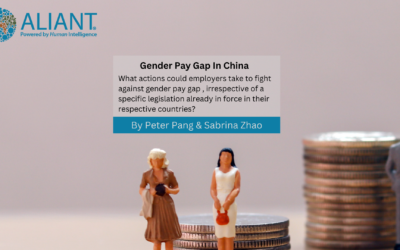Gender Pay Gap in Israel : Women earn lower wages than men. This statement is true in relation to all developed countries, but in Israel the wage gap between women and men is particularly high. According to data from the Organization for Economic Co-operation and Development (OECD), in 2019, among the organization’s countries, only South Korea had a larger wage gap than in Israel. The median pay gap between men and women employed full-time was 24.3% in Israel, compared to 12.6% in all OECD countries. The gap between Israel and the OECD countries narrowed between the years 2001 until 2010 and widened between 2011 through 2018.
According to data from the Central Bureau of Statistics, in 2019, a woman’s salary was approximately 32% lower than a man’s salary (NIS 12,193 per month for a man compared to NIS 8,308 for a woman). Although this gap has narrowed over the past 30 years (in 1990 it stood at 43%), one cannot dispute that it is still rather high. Moreover, the current level is comparable to the level in 2013.
In addition, the public sector gender wage gap report published by the Ministry of Finance at the end of 2022 showed that wage gaps between men and women in government companies are 32%, in the education system 25%, in the health system 35%, and in local government 31%.
A significant turnaround in the war against pay gaps between men and women in Israel occurred in early June 2022, when companies’ first public reports on wages by gender were published. This publication is the result of an amendment to the Equal Pay for Male and Female Employees Law, passed by the Knesset (Israel’s Parliament) in August 2020. According to the amendment, any public body that has more than 518 employees is obligated to publish an annual report detailing the discrepancies in average salary between men and women in their workplace.
What is the reason for the discrepancy?
Studies show that the women’s employment patterns are characterized by a wide range of intertwined social, cultural, and behavioral elements that create a complex web of factors that contribute to gender wage gaps in Israel.
Employment patterns:
Previous empirical analyses in Israel have shown that the wage gaps between men and women primarily stem from variance of full or part time employment, distinct gender occupations and types of employers. Part of the gender wage discrepancy stems from the fact that women tend to prefer public sector positions and employment opportunities that are more tolerant, flexible and forthcoming regarding childbirth; despite lower wage levels.
Work-family conflict:
Moreover, many women suffer from a “work-family conflict” stemming from the social expectation that women are the primary caretakers of children, creating difficulty in balancing work and family life responsibilities. The different employment patterns of women and men tend to manifest at the outset of childrearing. Women tend reduce their employment hours due to the added responsibilities whereas men tend increase their commitment to work in order to support the family. Research shows that the imbalance between men and women roles in the commitment to childcare and domestic responsibilities is a primary source of the gender wage discrepancy in Israel.
Child-rearing impact:
The employment price that women pay for their motherhood is higher in Israel, this is because Israel’s fertility rate is the highest in the OECD countries, averaging 3.1 births per woman compared to 1.7 in other OECD countries. The gender wage gap is also affected by differences in the way women and men conduct themselves in the workplace. Women’s wage expectations tend to be lower than those of men, and only a small percentage of women haggle over wages when entering a workplace, different than men.
Workplace behavior and perceptions:
Women are also less likely to seek opportunities for professional advancement. The perception of women, social norms, and stereotyping regarding their skills, abilities, and performance limit their professional in a variety of positions, professions, and ranks limit women’s prospects in the employment market. These inequalities lead to a work environment that is critical of women while lenient towards men, further diminishing promotions, options and wages for women.
Proposed measures
Any solution to the existing state of affairs must involve the three major protagonists: the state, the employers and women employees. The state needs to create a greater work-family balance including a reduction of weekly work hours together with lengthening school hours. Tax benefits for working women should be expanded. Another measure that may help those women who do not reach the taxable wage level is to increase the bonus paid to low-wage earners according to marital status criteria.
Preschool childcare needs to be improved, both in availability and quality, reducing costs and further subsidizing daycare centers for two employed parents. Maternity leave for fathers should be encouraged and expanded to better balance home care roles. Studies indicate that maternity leave fathers are more attached to their young children, more involved in household chores over time, enhancing women employment options and their career course.
Employers should be encouraged to transition to employment models that emphasizes the work output rather than the daily hours. Flexible formats will allow women to combine work more easily with their family responsibilities and leisure time. additional wage transparency mechanisms should be initiated, including legislation requiring businesses to report wage gaps and voluntary tools that assist businesses to measure these discrepancies. An increase of legislated quotas to ensure adequate representation of women in key positions and senior management will further achieving these goals.
Hopefully women will be more open to adopt less traditional gender roles regarding the family-work paradigm. The majority of Israeli society still holds and practices traditional gender role models, where women are the principal caretakers and men focus on being the primary wage earner. Enhancing egalitarian spouse/parenting roles and responsibilities will foster greater equality in the workplace. Personal guidance programs, development of employment skills, assistance in employment searches and mentoring are all constructive tools toward a more egalitarian work environment.
Please follow these six part series and find out in our last Part VI what actions could employers in China take to fight against gender pay gap.





